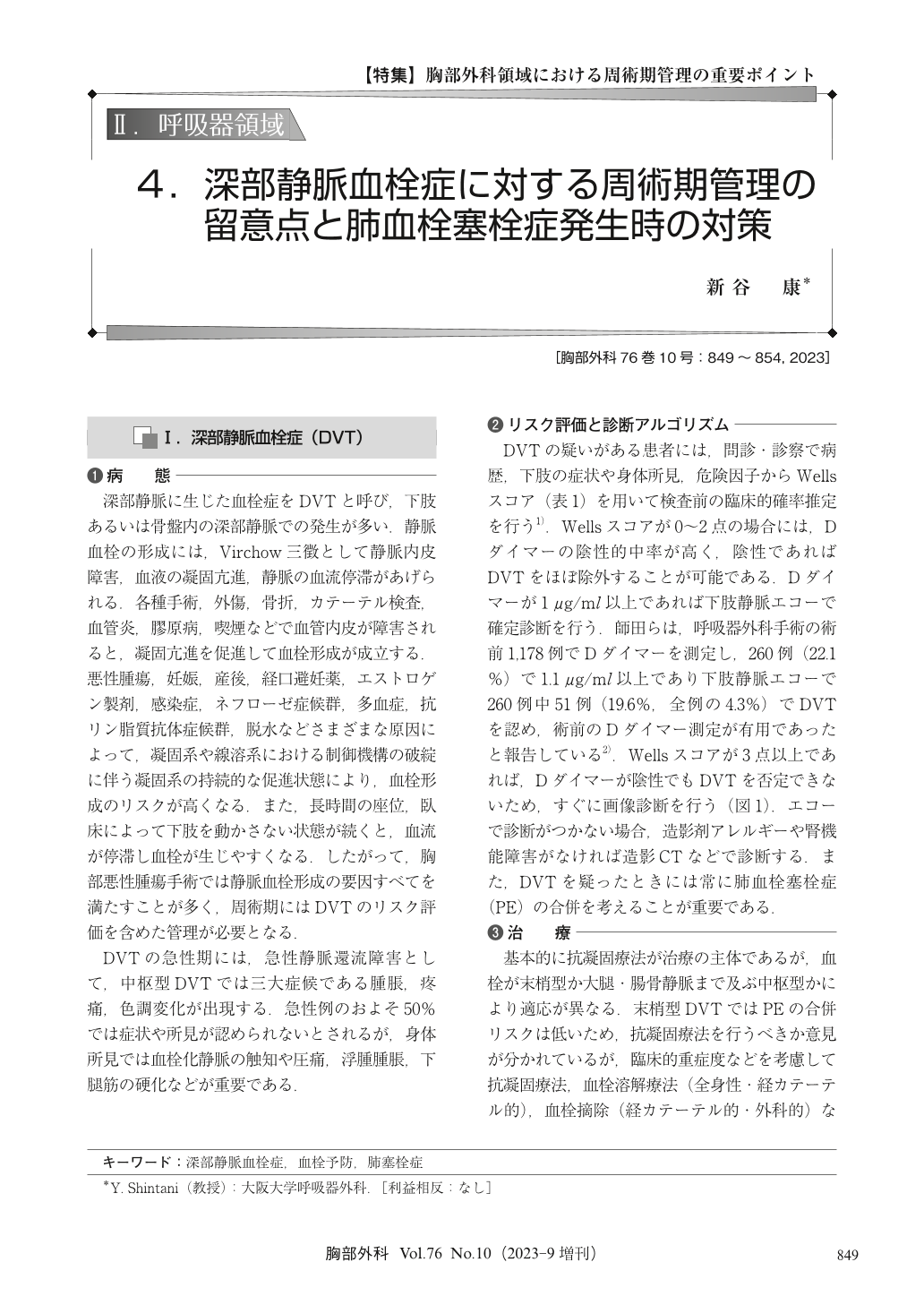Japanese
English
- 有料閲覧
- Abstract 文献概要
- 1ページ目 Look Inside
- 参考文献 Reference
1)胸部悪性腫瘍手術では静脈血栓形成の要因すべてを満たすことが多く,術前に各患者におけるDVTのリスクを評価することが重要であり,リスクに応じた適切な予防によりPEを予防する.2)呼吸器外科手術後に発生したPEは重篤になる可能性が高く,Wellsスコアによる評価でPEが疑われる場合には,胸部造影CTなどのスクリーニング検査を迅速に実施する.3)PEの治療としては,薬物的抗血栓療法に加え,重篤な場合にはカテーテルもしくは外科手術による血栓の除去を考慮し,ショックあるいは心肺停止状態に陥った場合には補助循環を導入する.
Preoperative evaluation of deep vein thrombosis (DVT), which is a known risk factor for the development of pulmonary embolism (PE), is important prior to performing thoracic surgery. The incidence of DVT after thoracic surgery is estimated to be 4% and the incidence of PE 0.6%. Lung cancer may be responsible for the highest incidence of thrombotic events associated with cancer. Longer operative time, intraoperative bleeding, extended surgical injury, pneumonectomy, and incomplete resection are all correlated to higher chance of acute PE after thoracic surgery. Risk-assessment models for DVT or PE can be utilized in thoracic surgery, and prophylaxis pre and post operation is highly recommended. Estimation of D-dimer levels is a valid preoperative screening strategy to evaluate the risk of DVT, and ultrasonographic examination should be performed in patients whose D-dimer levels are more than 1.0 μg/ml. Computed tomographic pulmonary angiography is the gold standard in diagnosis of acute PE. Postoperative PE needs to be diagnosed and treated promptly as delay may be fatal. Anticoagulants and thrombolytic therapy have shown a great success in treatment of acute PE. Surgical approach for acute PE has also shown to be a lifesaving in some cases, and percutaneous cardiopulmonary support may be useful for patients with circulatory collapse or cardiopulmonary arrest.

© Nankodo Co., Ltd., 2023


